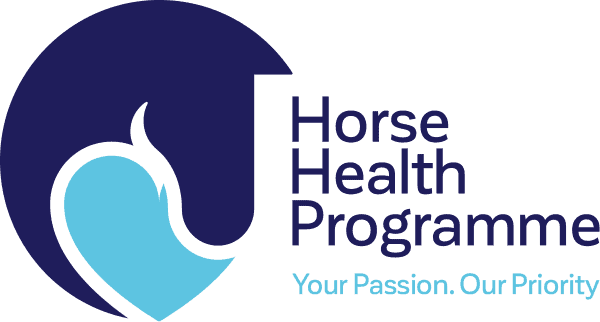The link between spring grass and laminitis
The recent warm weather suggests that spring is here – along with daffodils, spring grass… and increased risk of laminitis. So how can we reduce this risk? And how can the Horse Health Programme (HHP) help you combat spring grass and laminitis?
This summary will help you to understand laminitis. If you need more information, contact your local Horse Health Programme Provider who can provide up-to-date recommendations on any aspect of laminitis.
Hyperinsulinaemia is the underlying problem
We tend to think of spring grass as the trigger for many laminitis cases. But, typically, the problem is caused not by grass alone but by grass intake combined with the high blood insulin levels (hyperinsulinaemia) that occur in ponies and horses with:
- Equine metabolic syndrome (EMS)
- Pituitary pars intermedia dysfunction (PPID; Cushing’s disease).
When animals with EMS or PPID consume sugars or starches their hyperinsulinaemia is exacerbated, and it is this that triggers laminitis. Common sources of sugars/starches – also known as non-structural carbohydrates (NSCs) – include:
- Grass
- Hay/haylage
- Grain/concentrates.
It is therefore important to minimise the sugar, starch and NSC intake of any horse or pony that has EMS and/or PPID.
Spring grass and laminitis
Although almost any grass-based forage can precipitate laminitis in susceptible animals, spring grass is a particular concern because the sudden increase in daylight causes the plant to photosynthesise, thereby generating NSCs. On warm nights these NSCs are used to fuel overnight growth but on cool nights the NSCs accumulate in the plant. This is why grass that grows in spring and autumn – when we have warm sunny days and cool nights – is most problematic.
What is laminitis?
The laminae of the horse’s foot are thin, vertically-oriented structures that attach the coffin (pedal) bone to the hoof wall and prevent the bone from sinking or rotating.
When the laminae are damaged or inflamed, as in laminitis, they can no longer prevent coffin bone movement. The severity of laminar damage determines the symptoms and degree of bone rotation/sinking.
Symptoms
Laminitis symptoms, which range from subtle to obvious, include:
- ‘Footy’ behaviour
- Shifting weight in front
- Reluctance to walk/turn/pick up feet
- Stretched white line
- ‘Rocking horse’ stance (weight shifted backwards).
Recognition of laminitis
- Learn what to look for: many cases are not recognised by owners
- This is supported by research suggesting that some obese ponies may have unrecognised subclinical laminitis
- Consult your farrier: he/she is well placed to recognise at-risk animals
- Don’t rule out the possibility of laminitis in summer and winter
- The high prevalence of EMS and PPID – combined with the unpredictability of grass NSC levels – means that laminitis is a year-round issue.
Prevention
Prevention of laminitis is based on:
- Prevention of being overweight and obese
- Diagnosing and treating animals with EMS and PPID
- Learning how to minimise sugar and starch intake in susceptible animals.
To help you achieve this, the HHP gives you:
- 10% off all veterinary products, treatments and services
- 20% off lifetime medications, including Cushing’s medication
- Veterinary advice
- If you need any information relating to laminitis, contact your local Horse Health Programme practice for advice.





